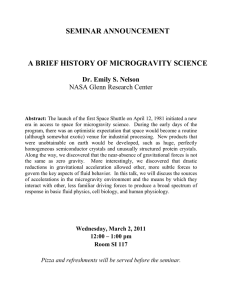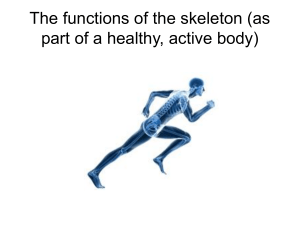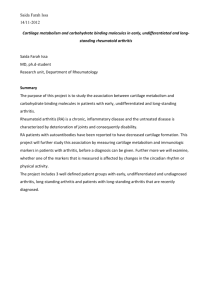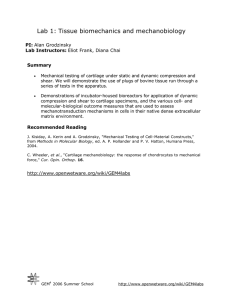INDUCTION OF EARLY STAGES OF OSTEOARTHRITIS AFTER EXPOSURE TO MICROGRAVITY 4144.pdf
advertisement
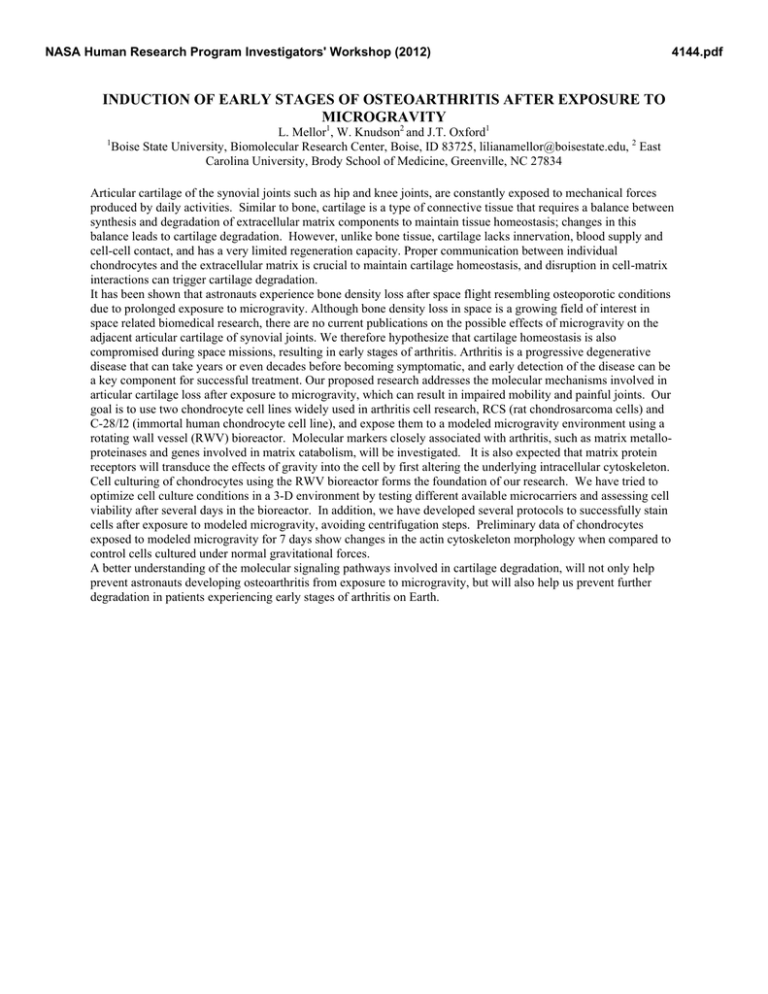
NASA Human Research Program Investigators' Workshop (2012) 4144.pdf INDUCTION OF EARLY STAGES OF OSTEOARTHRITIS AFTER EXPOSURE TO MICROGRAVITY 1 L. Mellor1, W. Knudson2 and J.T. Oxford1 Boise State University, Biomolecular Research Center, Boise, ID 83725, lilianamellor@boisestate.edu, 2 East Carolina University, Brody School of Medicine, Greenville, NC 27834 Articular cartilage of the synovial joints such as hip and knee joints, are constantly exposed to mechanical forces produced by daily activities. Similar to bone, cartilage is a type of connective tissue that requires a balance between synthesis and degradation of extracellular matrix components to maintain tissue homeostasis; changes in this balance leads to cartilage degradation. However, unlike bone tissue, cartilage lacks innervation, blood supply and cell-cell contact, and has a very limited regeneration capacity. Proper communication between individual chondrocytes and the extracellular matrix is crucial to maintain cartilage homeostasis, and disruption in cell-matrix interactions can trigger cartilage degradation. It has been shown that astronauts experience bone density loss after space flight resembling osteoporotic conditions due to prolonged exposure to microgravity. Although bone density loss in space is a growing field of interest in space related biomedical research, there are no current publications on the possible effects of microgravity on the adjacent articular cartilage of synovial joints. We therefore hypothesize that cartilage homeostasis is also compromised during space missions, resulting in early stages of arthritis. Arthritis is a progressive degenerative disease that can take years or even decades before becoming symptomatic, and early detection of the disease can be a key component for successful treatment. Our proposed research addresses the molecular mechanisms involved in articular cartilage loss after exposure to microgravity, which can result in impaired mobility and painful joints. Our goal is to use two chondrocyte cell lines widely used in arthritis cell research, RCS (rat chondrosarcoma cells) and C-28/I2 (immortal human chondrocyte cell line), and expose them to a modeled microgravity environment using a rotating wall vessel (RWV) bioreactor. Molecular markers closely associated with arthritis, such as matrix metalloproteinases and genes involved in matrix catabolism, will be investigated. It is also expected that matrix protein receptors will transduce the effects of gravity into the cell by first altering the underlying intracellular cytoskeleton. Cell culturing of chondrocytes using the RWV bioreactor forms the foundation of our research. We have tried to optimize cell culture conditions in a 3-D environment by testing different available microcarriers and assessing cell viability after several days in the bioreactor. In addition, we have developed several protocols to successfully stain cells after exposure to modeled microgravity, avoiding centrifugation steps. Preliminary data of chondrocytes exposed to modeled microgravity for 7 days show changes in the actin cytoskeleton morphology when compared to control cells cultured under normal gravitational forces. A better understanding of the molecular signaling pathways involved in cartilage degradation, will not only help prevent astronauts developing osteoarthritis from exposure to microgravity, but will also help us prevent further degradation in patients experiencing early stages of arthritis on Earth.
